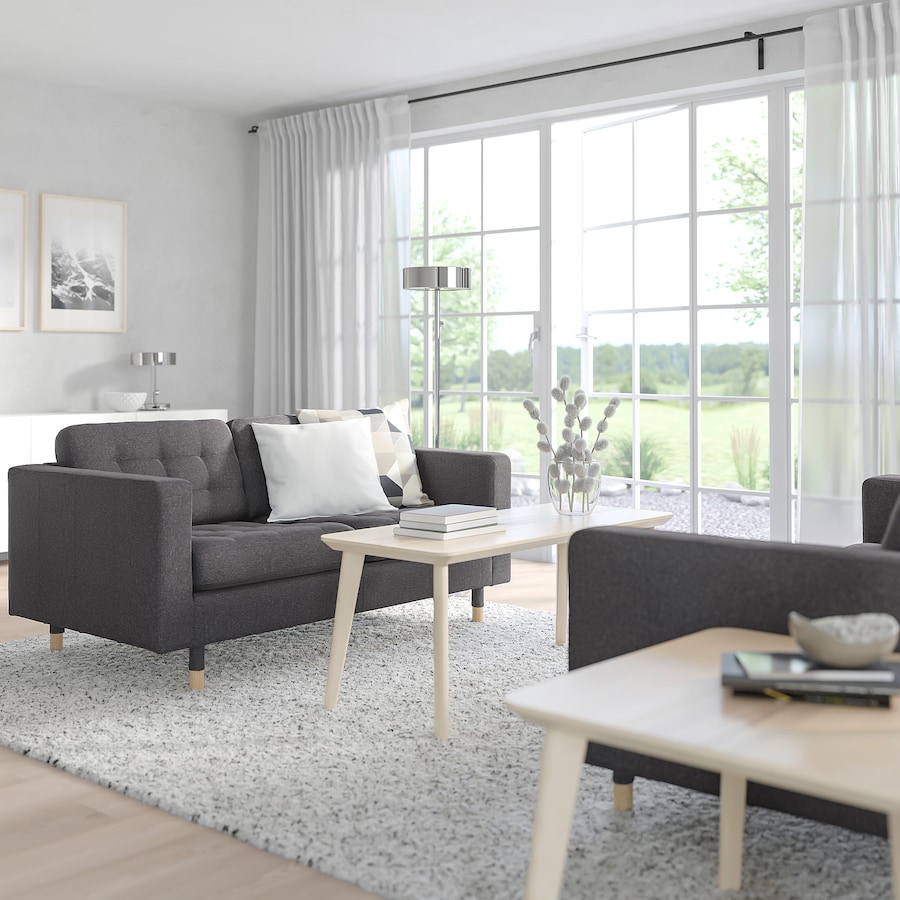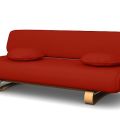When I moved into my Brooklyn apartment, I bought a new couch after considering a few other small sofa options. While I liked the overall midcentury modern look of Ikea’s Morabo sofa, there was one thing I wasn’t so happy about: the color of the legs.
The Morabo comes with your choice of cylindrical metal or wooden leg — and funny little sleeves that cover the top part of the sofa legs (as shown above). I decided to forgo the sleeves. And I went with the solid wooden leg, but it only comes in a light-colored oak veneer.

Ikea Morabo sofa on its back, showing its oak-colored legs.
Given that my vintage wood coffee table and my media console were both darker shades (something closer to walnut), I wanted the sofa legs in a similar shade. They didn’t need to match exactly, but I wanted them to feel related.
I considered buying new legs. I could even get tapered legs to really lean into that midcentury modern style. But then I’d have an extra set of legs after swapping the new ones in, and that felt kind of wasteful. Using what you already have is the more sustainable thing to do. I mean, when an item of clothing doesn’t quite work for me, I might see if there’s a way to alter it. So I decided to do the same to the sofa legs.
I could try to stain the legs a darker color. But that was more work than I wanted to put in. My solution? I used some contact paper in a wood grain pattern. The contact paper was leftover from covering some shelves in a closet, so it didn’t even cost me anything.

Remember to match the direction of the wood grain.
And it’s super easy. I just measured the height of the leg and cut contact paper to size. I did mess up with the first piece of contact paper. After cutting it, I realized the wood grain on the leg was vertical, whereas on the piece of contact paper it was horizontal. So make sure to match the direction of the grain.

Before

After
Pros: Low-cost, quick, and not permanent. If I need to revert to the original, no problem.
Cons: If you look closely you can tell it’s not real wood. However, the sofa legs are close to the floor. Who is really paying attention? As it turns out, not my spouse. I made this swap in February and he still hasn’t noticed nearly eight months later!
Here’s a video of the whole process:
View this post on Instagram




